第 12 类 RD Sharma 解决方案 - 第 6 章行列式 - 练习 6.4 |设置 2
问题 17. 用克莱默法则求解下列线性方程组。
2x - 3y - 4z = 29
-2x + 5y - z = -15
3x - y + 5z = -11
解决方案:
Using Cramer’s Rule, we get,

Expanding along R1, we get,
= 2 (24) + 3 (−13) + 4 (-13)
= 48 − 21 – 52
= -25
Also, we get,

Expanding along R1, we get,
= 29 (24) + 3 (−64) + 4 (−40)
= 692 − 192 − 160
= 344

Expanding along R1, we get,
= 2 (−64) − 29 (−7) + 4 (23)
= −128 + 203 + 92
= 167
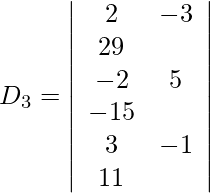
Expanding along R1, we get,
= 2 (40) + 3 (23) + 29 (−13)
= 80 + 69 − 377
= −228
So, x = D1/D = -344/25
y = D2/D = -167/25
z = D3/D = 228/25
Therefore, x = -344/25, y = -167/25, and z = 228/25.
问题 18. 用克莱默法则求解下列线性方程组。
x + y = 1
x + z = -6
x - y - 2z = 3
解决方案:
Using Cramer’s Rule, we get,
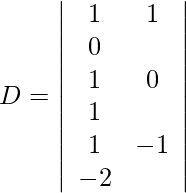
= 1(1) – 1(-3)
= 1 + 3
= 4
Also, we get,

Expanding along R1, we get,
= 1 (1) − 1 (9) + 0
= 1 − 9
= −8
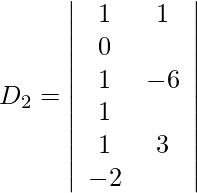
Expanding along R1, we get,
= 1 (9) − 1 (−3)
= 9 + 3
= 12
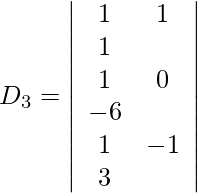
Expanding along R1, we get,
= 1 (−6) − 1 (9) + 1 (−1)
= −6 − 9 − 1
= −16
So, x = D1/D = -8/4 = -2
y = D2/D = 12/4 = 3
z = D3/D = -16/4 = -4
Therefore, x = −2, y = 3 and z = −4.
问题 19. 用克莱默法则求解下列线性方程组。
x + y + z + 1 = 0
ax + by + cz + d = 0
a 2 x + b 2 y + c 2 z + d 2 = 0
解决方案:
Using Cramer’s Rule, we get,

c2 -> c2 – c1, c3 -> c3 – c1
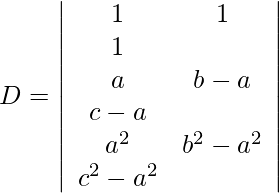
Taking common (b-a) from c2 and (c-a)c3

Expanding along R1, we get,
= (b – a)(c – a)(c + a – b – a)
= (b – a)(c – a)(c – b)
= (a – b)(b – c)(c – a)
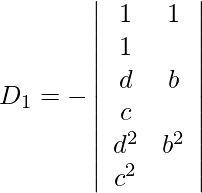
= -(d – b)(b – c)(c – d)
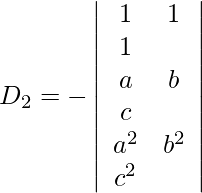
= -(a – d)(d – c)(c – a)
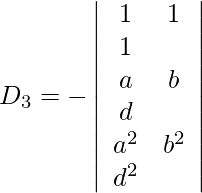
= -(a – d)(b – d)(d – a)
So, x = D1/D = -(d – b)(b – c)(c – d)/(a – b)(b – c)(c – a)
y = D2/D = -(a – d)(d – c)(c – a)/(a – b)(b – c)(c – a)
z = D3/D = -(a – d)(b – d)(d – a)/(a – b)(b – c)(c – a)
问题 20. 用克莱默法则求解下列线性方程组。
x + y + z + w = 2
x - 2y + 2z + 2w = -6
2x + y - 2z + 2w = -5
3x - y + 3z - 3w = -3
解决方案:
Using Cramer’s Rule, we get,
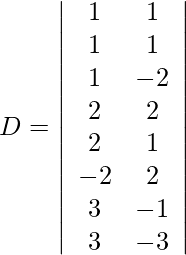
= 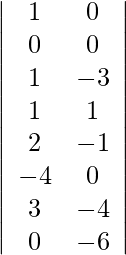
= 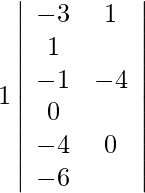
= −94
Also, we get,
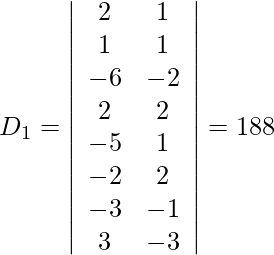
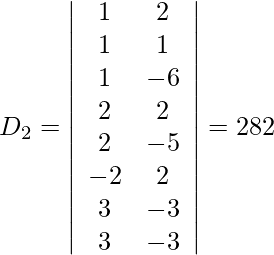
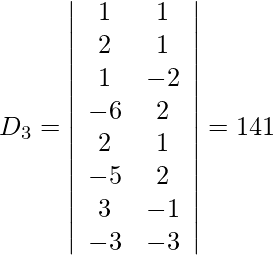

So, x = D1/D = -188/94 = -2
y = D2/D = -282/-94 = 3
z = D3/D = -141/-94 = 3/2
w = D4/D = -47/94 = -1/2
Therefore, x = −2, y = 3 and z = 3/2 and w = -1/2.
问题 21. 用克莱默法则求解下列线性方程组。
2x - 3z + w = 1
x - y + 2w = 1
−3y + z + w = 1
x + y + z = -1
解决方案:
Using Cramer’s Rule, we get,
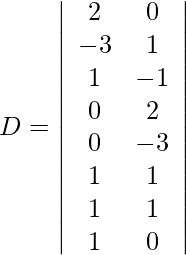
=
= 
= −21
Also, we get,

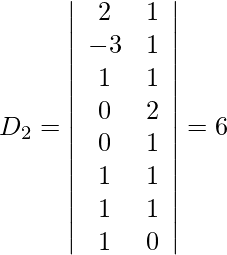
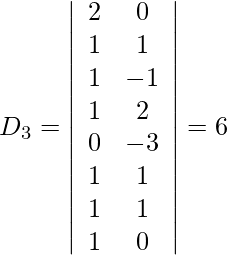
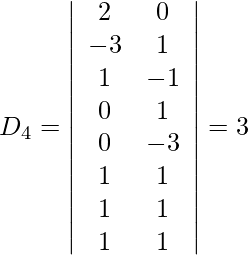
So, x = D1/D = -21/-21 = 1
y = D2/D = -6/-21 = 2/7
z = D3/D = -6/-21 = 2/7
w = D4/D = -3/21 = -1/7
Therefore, x = 1, y = 2/7 and z = 2/7 and w = -1/7.
问题 22. 证明下列线性方程组是不一致的。
2x - y = 5
4x - 2y = 7
解决方案:
Using Cramer’s Rule, we get,

= −4 + 4
= 0
Also, we get,

= − 10 + 7
= −3

= 14 − 20
= −6
Since D = 0 and D1 and D2 both are non-zero, the given system of equations is inconsistent.
Hence proved.
问题 23. 证明下列线性方程组是不一致的。
3x + y = 5
−6x − 2y = 9
解决方案:
Using Cramer’s Rule, we get,

= −6 + 6
= 0
Also, we get,

= −10 − 9
= −19

= 27 + 30
= 57
Since D = 0 and D1 and D2 both are non-zero, the given system of equations is inconsistent.
Hence proved.
问题 24. 证明下列线性方程组是不一致的。
3x - y + 2z = 3
2x + y + 3z = 5
x - 2y - z = 1
解决方案:
Using Cramer’s Rule, we get,
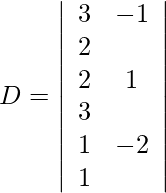
Expanding along R1, we get
= 3 (5) + 1 (−5) + 2 (−5)
= 15 − 5 − 10
= 0
Also, we get,
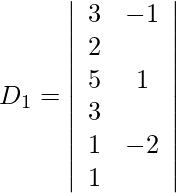
Expanding along R1, we get
= 3 (5) + 1 (−8) + 2 (−11)
= 15 − 8 − 22
= −15
Since D = 0 and D1 are non-zero, the given system of equations is inconsistent.
Hence proved.
问题 25. 证明下列线性方程组是一致的并求解。
3x - y + 2z = 6
2x - y + z = 2
3x + 6y + 5z = 20
解决方案:
Using Cramer’s Rule, we get,
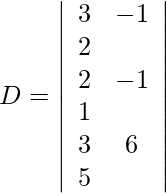
Expanding along R1, we get
= 3 (−11) + 1 (7) + 2 (15)
= −33 + 7 + 30
= 4
Also, we get,
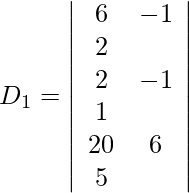
Expanding along R1, we get
= 6 (−11) + 1 (−10) + 2 (32)
= −66 − 10 + 64
= −12

Expanding along R1, we get
= 3 (−10) − 6 (7) + 2 (34)
= −30 − 42 + 68
= −4
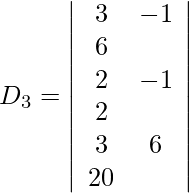
Expanding along R1, we get
= 3 (−32) + 1 (34) + 6 (15)
= −96 + 34 + 90
= 28
As D, D1, D2 and D3 all are non-zero, the given system of equations is consistent.
So, x = D1/D = -12/4 = -3
y = D2/D = -4/4 = -1
z = D3/D = 28/4 = 7
Therefore, x = −3, y = −1 and z = 7.
问题 26. 证明下列线性方程组有无限个解。
x - y + z = 3
2x + y - z = 2
-x - 2y + 2z = 1
解决方案:
Using Cramer’s Rule, we get,
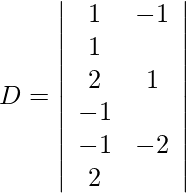
= 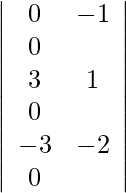
= 0
Also, we get,
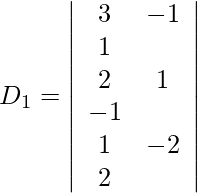
= 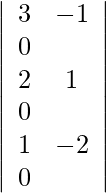
= 0
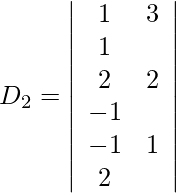
= 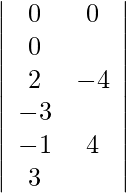
= 0
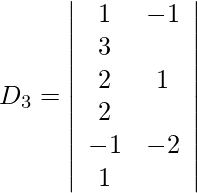
= 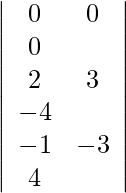
= 0
As D, D1, D2 and D3 all are zero, the given system of equations has infinite number of solutions.
Hence proved.
问题 27. 证明下列线性方程组有无限个解。
x + 2y = 5
3x + 2y = 15
解决方案:
Using Cramer’s Rule, we get,

= 6 − 6
= 0
Also, we get,

= 30 − 30
= 0

= 15 − 15
= 0
As D, D1 and D2 all are zero, the given system of equations has infinite number of solutions.
Hence proved.
问题 28. 证明下列线性方程组有无限个解。
x + y - z = 0
x − 2y + z = 0
3x + 6y - 5z = 0
解决方案:
Using Cramer’s Rule, we get,
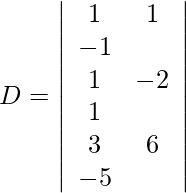
= 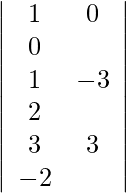
= 1 (6 − 6)
= 0
Also, we get,
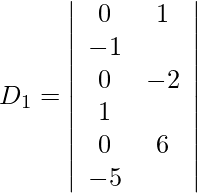
= 0
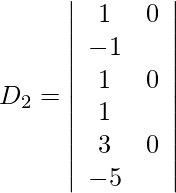
= 0
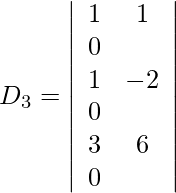
= 0
As D, D1, D2 and D3 all are zero, the given system of equations has infinite number of solutions.
Hence proved.
问题 29. 证明下列线性方程组有无限个解。
2x + y - 2z = 4
x - 2y + z = -2
5x - 5y + z = -2
解决方案:
Using Cramer’s Rule, we get,

= 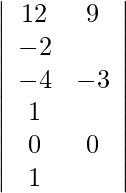
= 1 (−36 + 36)
= 0
Also we get,
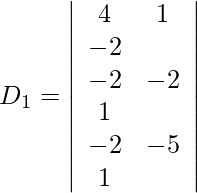
= 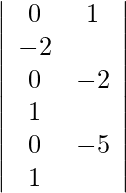
= 0
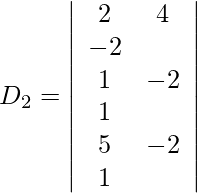
= 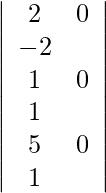
= 0
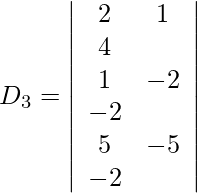
= 
= 2 (−12 + 12)
= 0
As D, D1, D2 and D3 all are zero, the given system of equations has infinite number of solutions.
Hence proved.
问题 30. 证明下列线性方程组有无限个解。
x - y + 3z = 6
x + 3y - 3z = -4
5x + 3y + 3z = 10
解决方案:
Using Cramer’s Rule, we get,
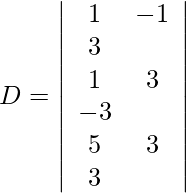
= 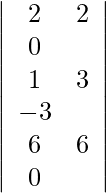
= 3 (12 − 12)
= 0
Also we get,
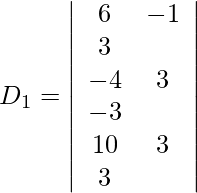
= 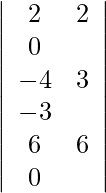
= 3 (12 − 12)
= 0
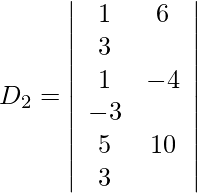
= 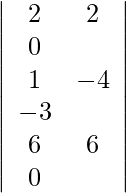
= 3 (12 − 12)
= 0

= 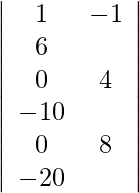
= 1 (−80 + 80)
= 0
As D, D1, D2 and D3 all are zero, the given system of equations has infinite number of solutions.
Hence proved.
问题 31. 一位推销员在三个月内对三个不同佣金率的项目 A、B 和 C 的销售记录如下。
| Month | Sale of units | Total Commission (in Rs) | ||
|---|---|---|---|---|
| A | B | C | ||
| Jan | 90 | 100 | 20 | 800 |
| Feb | 130 | 50 | 40 | 900 |
| Mar | 60 | 100 | 30 | 850 |
使用行列式方法找出项目 A、B 和 C 的佣金率。
解决方案:
Let the rates of commission on items A, B and C be x, y and z respectively.
According to the question, we have,
90x + 100y + 20z = 800
130x + 50y + 40z = 900
60x + 100y + 30z = 850
Using Cramer’s Rule, we get,
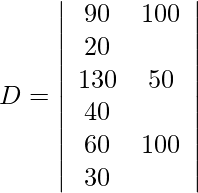
= 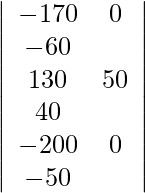
= 50 (8500 − 12000)
= −175000
Also we get,
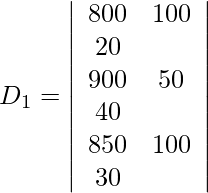
= 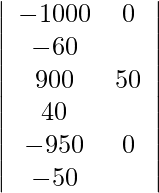
= 50 (50000 − 57000)
= −350000
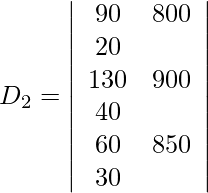
= 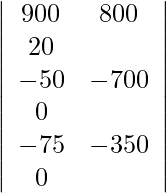
= 20 (17500 − 52500)
= −700000
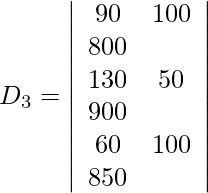
= 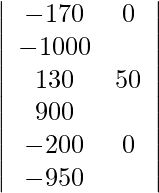
= 50 (161500 − 200000)
= −1925000
So, x = D1/D = -350000/-175000 = 2
y = D2/D = -700000/-175000 = 4
z = D3/D = -1925000/-175000 = 11
Therefore, the rates of commission on items A, B and C are 2%, 4% and 11% respectively.
问题32、某汽车公司使用三种钢材S 1 、S 2和S 3生产三种汽车C 1 、C 2和C 3 。每种汽车的钢材要求(吨)如下所示。
| Steel | Cars | ||
|---|---|---|---|
| C1 | C2 | C3 | |
| S1 | 2 | 3 | 4 |
| S2 | 1 | 1 | 2 |
| S3 | 3 | 2 | 1 |
使用克莱默法则,找出每种类型的汽车的数量,分别使用 29、13 和 16 吨三种钢材可以生产。
解决方案:
Let x, y and z be the number of cars C1, C2 and C3 produced respectively.
According to the question, we have,
2x + 3y + 4z = 29
x + y + 2z = 13
3x + 2y + z = 16
Using Cramer’s Rule, we get,
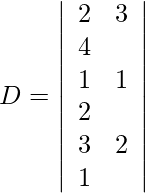
= 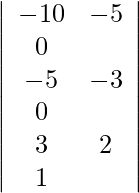
= 1 (30 − 25)
= 5
Also we get,
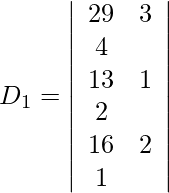
= 
= 1 (105 − 95)
= 10
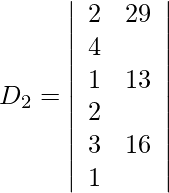
= 
= 1 (190 − 175)
= 15
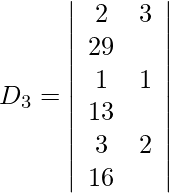
= 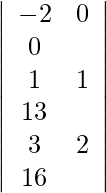
= −2 (16 − 26)
= 20
So, x = D1/D = 10/5 = 2
y = D2/D = 15/5 = 3
z = D3/D = 20/5 = 4
Therefore, the number of cars produced of type C1, C2 and C3 are 2, 3 and 4.